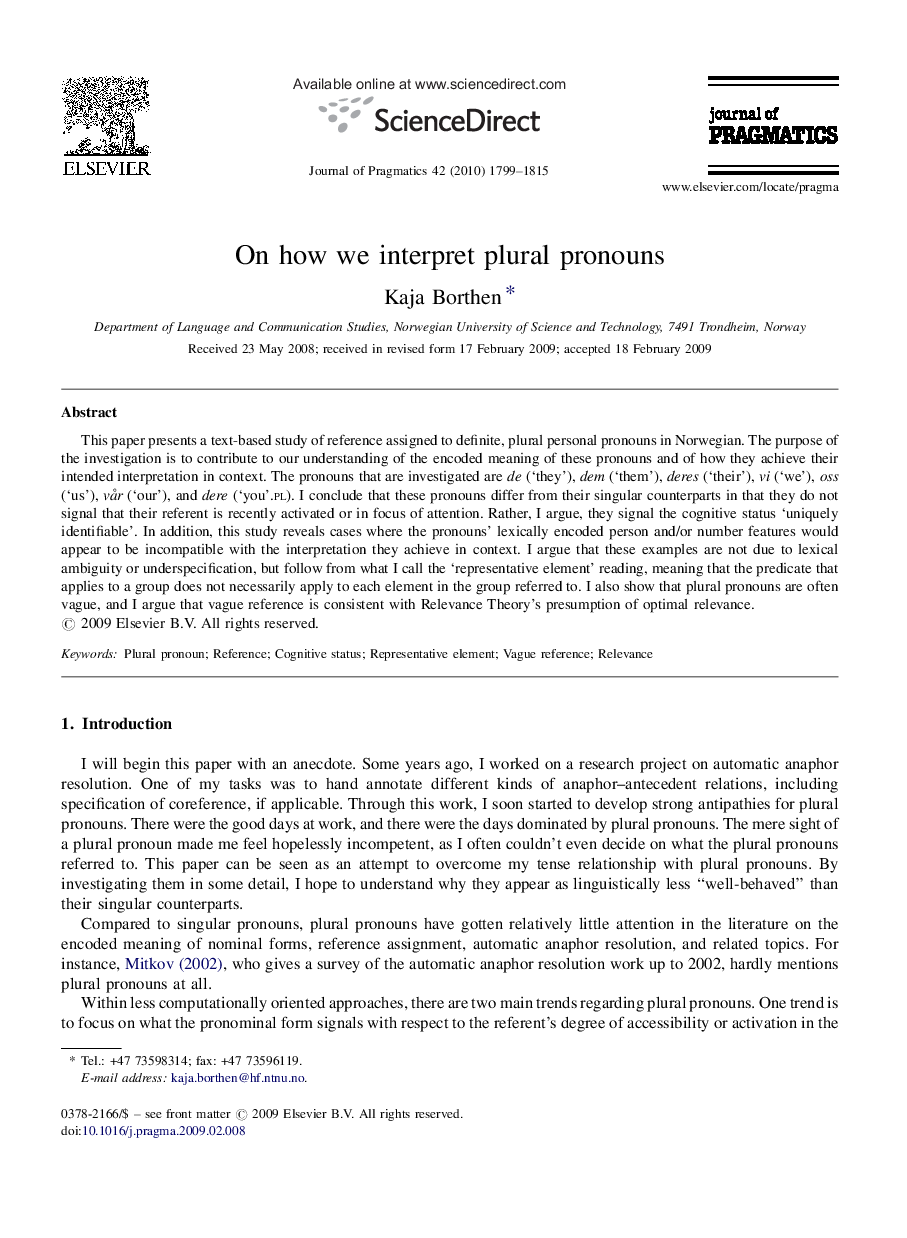| کد مقاله | کد نشریه | سال انتشار | مقاله انگلیسی | نسخه تمام متن |
|---|---|---|---|---|
| 933671 | 923355 | 2010 | 17 صفحه PDF | دانلود رایگان |

This paper presents a text-based study of reference assigned to definite, plural personal pronouns in Norwegian. The purpose of the investigation is to contribute to our understanding of the encoded meaning of these pronouns and of how they achieve their intended interpretation in context. The pronouns that are investigated are de (‘they’), dem (‘them’), deres (‘their’), vi (‘we’), oss (‘us’), vår (‘our’), and dere (‘you’.pl). I conclude that these pronouns differ from their singular counterparts in that they do not signal that their referent is recently activated or in focus of attention. Rather, I argue, they signal the cognitive status ‘uniquely identifiable’. In addition, this study reveals cases where the pronouns’ lexically encoded person and/or number features would appear to be incompatible with the interpretation they achieve in context. I argue that these examples are not due to lexical ambiguity or underspecification, but follow from what I call the ‘representative element’ reading, meaning that the predicate that applies to a group does not necessarily apply to each element in the group referred to. I also show that plural pronouns are often vague, and I argue that vague reference is consistent with Relevance Theory's presumption of optimal relevance.
Journal: Journal of Pragmatics - Volume 42, Issue 7, July 2010, Pages 1799-1815